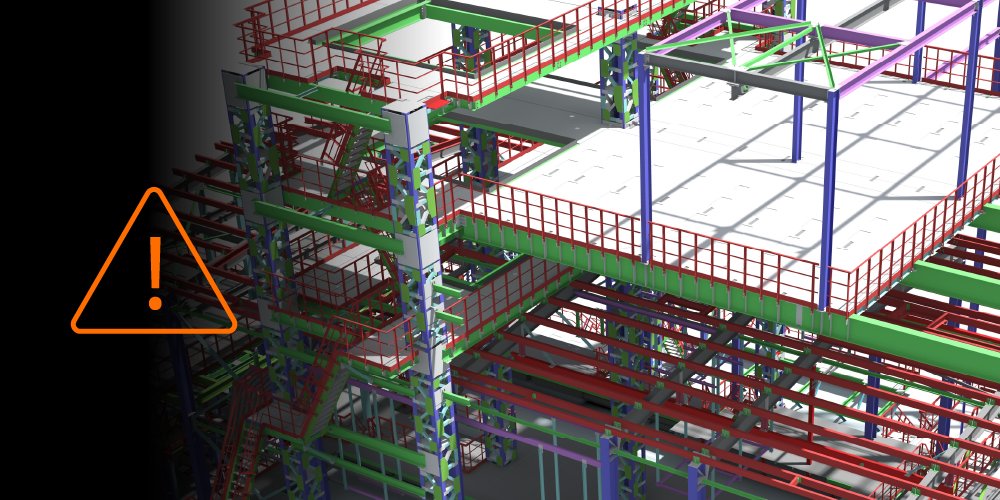Related Articles
— 10 min read
5 Must-Know Financial KPIs for Construction Companies To Improve Profit

Last Updated Sep 10, 2025

Brendan McGurk
Strategic Product Consultant - Construction Financials
21 articles
"Brendan is a Strategic Product Consultant for Procore Financials, where he enjoys leading and innovating internal company processes to deliver on both public and private projects. He brings 12 years of experience working in various construction roles ranging from builder's hand to quantity surveyor and project manager on both the owner and main contractor side.
Originally studying Accounting, he changed direction to quantity surveying after the Christchurch Earthquake in 2011. He is now qualified and an NZIQS-recognised Quantity Surveyor. He’s since worked on projects from feasibility, concept design, and value engineering right through to construction and post-construction support.
Last Updated Sep 10, 2025

Managing and executing a construction project is one thing. Making sure it's profitable is another. To boost profitability in construction projects, your first step is to assess your current performance. Then, identify the key areas that require adjustments to increase earnings. Financial KPIs are essential tools in this context.
In this article, we'll explore the specific financial KPIs crucial for construction firms, guiding you on utilising them to make informed decisions and improve your bottom line.
Table of contents
Essential Financial KPIs for Profitability
To succeed, you need to know how your company is doing financially. With slim margins and large capital outlays, construction businesses in Australia and New Zealand must diligently track and analyse certain Key Performance Indicators (KPIs). In this chapter, we'll focus on five non-negotiable financial KPIs that have proven to be critical for maintaining and boosting profitability:
- Revenue Growth Rate: Tracking your growth over time.
- Gross Profit Margin: Understanding your direct profit relative to sales.
- Net Profit Margin: Assessing overall profit after all expenses.
- Return on Investment (ROI): Measuring the efficiency of your investments.
- Cash Flow: Monitoring liquidity and financial flexibility.
These KPIs aren’t just numbers—they’re actionable insights that can directly impact your bottom line.
Whether you’re an experienced business owner or new to the construction industry, our insights, tips, and strategies will guide you on leveraging these KPIs to make informed decisions, align with your financial goals, and ultimately achieve better profitability.
1. Revenue Growth Rate
Revenue growth rate measures the speed at which your construction business increases revenue over a specified period.
Generally, it’s measured annually, though one could calculate monthly or quarterly revenue growth should that be desired.
Revenue growth rate is a percentage of the previous period’s earnings. For example, if you earned $2m in 2022 and $3m in 2023, your revenue growth rate would be 50%.
That is, you increased 2022’s revenue by 50%.
This metric is critical for understanding a company’s ability to turn its market presence and advertising investments into revenue, as well as for forecasting its long-term ability to continue growing revenue.
Typically, this growth slows over time. You might see revenue double or even triple for the first few years of business, then wane to 50%, 30%, 15%, and so on as the years go by.
Revenue growth rates help investors understand what to expect regarding returns. It also helps leadership teams demonstrate the impact of their initiatives.
The formula for revenue growth rate looks like this:
Revenue Growth Rate = (Current Period Revenue - Prior Period Revenue) / Prior period revenue
Here's an example—let's say your company is looking at the following figures:
- Current period revenue: $42 Million
- Prior period revenue: $36 Million
Your calculation would be as follows:
($42m - $36m) / $36m = 16.67%
Revenue growth rate can be interpreted and analysed solely for the period it stands, though it's generally best to view this metric as a longer-term trend.
For example, is your business growing consistently at the same rate each year? If the growth rate increases, this is a positive sign that your strategic initiatives have legs (the opposite is also true).
Some construction companies also choose to calculate the average revenue growth rate per employee to understand the impact of staffing on profit.
Construction Services and Infrastructure Group (CSI Group) tracked a 17% uptick in revenue per employee when they started using Procore to track utilisation rates.
If you can increase revenue without adding headcount, this demonstrates that your business is effectively generating cash without having to increase outgoings in the form of labour costs.
2. Gross Profit Margin
Profit margin is the holy grail of financial KPIs for construction companies, and we want to know both gross margin and net margin.
First, let's take a look at gross profit margin.
Gross profit margin (sometimes called your gross margin ratio) is the percentage of your revenue retained after accounting for the cost of goods sold but before accounting for other operational costs and taxes.
We express gross profit margin as a percentage of sales.
For example, if sales totalled $5m for the year, and $1m was gross profit, then the gross profit margin would be 20% ($1m being 20% of $5m).
Higher gross profit margins are generally desirable, as they demonstrate that a business can maintain a profitable balance between what it charges for its services and what it pays to complete those same jobs.
The formula for gross profit margin is as follows:
Gross Profit Margin = (Sales – COGS) / Sales
So, if your cost of goods sold (which includes things like labour, materials, and equipment) were $2m for a period against a sales value of $6m, your calculator would be:
($6m - $2m) / $6m = 66.67%
Quick Tip: If your gross profit margin falls below industry standards, it's an indication to review the costs for your material and labour. Find inefficient spending, pinpoint where to improve that spending, and then find an alternative that'll save you money.
Gross profit margin is best interpreted in conjunction with net profit margin, as the gross value doesn’t tell you much about cash your business is actually generating.
You might have a really high gross margin and a much lower net profit margin, which would insinuate that most of your company’s profits are being drained by operating expenses like marketing and rent.
3. Net Profit Margin
Net profit margin is the profit your construction business makes after considering all operating expenses, taxes, and interest.
Generally speaking, it's a better measure of profitability than gross margin. That’s because it represents the amount of money left over for expansion activities or making payments to shareholders.
Like its counterpart, the net profit margin is expressed as a percentage of sales. It’s calculated like this:
Net Profit Margin = (Sales – COGS – Operating costs – Interest – Taxes) / Sales
Let’s revisit the above example. You had $6 million in revenue and $2 million in COGS, now, here are the additional figures:
The net profit margin requires some additional figures:
- Operating costs: $3 Million
- Interest: $50,000
- Taxes: $350,000
Your net profit margin calculation would be:
($6m - $2m - $3m - $50,000 - $350,000) / $6m = 10%
That paints a very different picture. While our gross profit margin was a massive 66.67%, our net profit margin sits closer to reality at 10%.
This means that for every $1 we made in revenue, 10% of it comes out as gross profit after accounting for all outgoings.
For practical purposes, you can use gross profit margin to assess the profitability of different jobs side by side. Then, dig into net profit margin to analyse total business profitability and overall financial health.
4. Return on Investment (ROI)
Return on investment tells you how much money you're making compared to what you spent to get it.
ROI can be calculated on particular projects, as well as to evaluate broader moves like investments, marketing campaigns and acquisitions
For instance, let’s say your company primarily focuses on commercial builds, but you decide to purchase another local construction company specialising in residential construction.
After three years of operation, you want to know how successful the purchase was financially. In other words, you want to know what the return was on that investment. So, you’ll run an ROI calculation.
Here’s the formula you’ll use to do it:
ROI = (Revenue generated - Investment amount) / Investment amount
Let’s explore an example of calculating the ROI from our latest construction project.
The project generated $65,000 in earnings and cost $45,000 in labour. Our calculation, then, looks like this:
($65,000 - $45,000) / $65,000 = 30%
ROI is often expressed as a multiplier. For example, a 2x ROI is essentially the same as saying you saw a 200% return on investment.
Understanding how to calculate ROI and then use it to express the impact of different investments is critical to future decision-making.
For example, when Mono Construction took on Procore to manage its change program, the company calculated a 12x return on investment.
For every dollar they invested in Procore software, they made $12 back in their hand.
Calculating the profitability of such investments helps Mono Construction make more informed decisions going forward (for example, what to expect from investing further in construction software).
At the project level, the return on investment metric allows construction businesses to prioritise certain jobs over others.
For example, if, after three years in business, your ROI is consistently higher for those residential projects than it has been for commercial builds, you might decide to pivot to residential construction entirely, focusing your resources on the more lucrative opportunity as a lever for growth.
In short, ROI is a great metric for identifying projects that are most profitable and that you can trust with your resources.
See what’s coming in construction over the next decade.
Download the Future State of Construction Report for insights, trends, and innovations shaping the industry over the next 8–10 years.

5. Cash Flow
Last but not least, let's talk about cash flow, a representation of how cash enters and exits your business and what this means for your bank account at the end of the period.
Note that cash flow is different from profit.
Your business might be profitable, but if you don't have enough cash on hand at a given moment, then you might not be able to pay for the expenses required to take on a new job.
For this reason, we want to look at two types of cash flow when establishing the financial health of a construction business:
- Net cash flow
- Projected cash flow
The formula for net cash flow is straightforward:
Cash Flow = Cash in (given period) – Cash out (given period)
Example: You want to calculate your net cash flow for the last month. $350,000 came in from customers paying their bills, and $250,000 went out to various expenses (wages, utilities, rentals, etc.).
Your net cash flow is $100,000 for that month.
In this case, cash flow is positive, but it's equally possible for cash flow to be negative. For example, say your expenses still totalled $250,000, but only $150,000 due to late paying customers.
Now, your net cash flow is -$100,000.
Quick Tip: A positive cash flow is usually the goal, but don't worry if you have negative cash flow occasionally—especially if you've just made a big purchase that's an investment in your future.
For example, if you had a good month with an average amount of cash flowing in but invested significantly in capital expenditures (such as purchasing new machinery and equipment), you could be cash flow negative with good reason.
So, like all of these construction KPIs, it's important to view them in context, and to track financial performance metrics as long-term trends.
Then, you want to turn your attention to cash flow projections.
This involves forecasting your revenue and expenses for the coming months to ensure you’re able to meet financial obligations such as payments to suppliers, and to assess the viability of further growth-focused investments.
A data-driven approach is the best way forward here, for which you’ll need some form of financial management platform.
For example, when Gaze Commercial brought Procore on board to manage construction financial forecasting, they saw a 50% improvement in the accuracy of their forecasts.
Turn Insights Into Action: Utilise Financial KPIs for Construction Companies to Fuel Profit Growth
Understanding how to calculate these five key financial KPIs for construction companies is critical for analysing business performance and understanding how the costs involved in various projects affect profitability.
Equally important, however, is consistently tracking, monitoring, and analysing these metrics without having to wade through pages of financial documents each time you want to check in on progress.
That’s why the most profitable construction companies use a construction management platform to track progress against KPIs, forecast profitability for future projects, and identify opportunities to improve profit margins without hurting customer satisfaction.
Make it easier to manage construction. Get in touch to find out more.
Categories:
Written by

Brendan McGurk
Strategic Product Consultant - Construction Financials | Procore
21 articles
"Brendan is a Strategic Product Consultant for Procore Financials, where he enjoys leading and innovating internal company processes to deliver on both public and private projects. He brings 12 years of experience working in various construction roles ranging from builder's hand to quantity surveyor and project manager on both the owner and main contractor side.
Originally studying Accounting, he changed direction to quantity surveying after the Christchurch Earthquake in 2011. He is now qualified and an NZIQS-recognised Quantity Surveyor. He’s since worked on projects from feasibility, concept design, and value engineering right through to construction and post-construction support.
Explore more helpful resources

Managing Direct Costs in Construction: How Visibility Drives Profitability
Direct costs define the financial reality of every construction project. They cover the labour, materials, and equipment that drive delivery and determine profitability. But even the best-planned budgets can shift...

BIM Clash Detection: Reducing Rework, Delays, and Risk in Construction
Design clashes can be a significant hidden cost in construction, as each conflict between systems risks expensive rework, project delays, and reduced margins. BIM clash detection empowers teams to identify...

Next-Gen Job-Costing: Ready to Move? 5 Things to Consider Before You Get Started
In this three-part series, Quantity Surveyor turned Financial Solutions Specialist Clint Burgess uncovers the real-world gains for people, processes, and profits when businesses move from legacy to next-generation Enterprise Resource...

From Workarounds to Workflow: Solving Construction’s Legacy Job-Costing System Challenges with Next-Gen Tools
In this three-part series, Quantity Surveyor turned Financial Solutions Specialist Clint Burgess uncovers the real-world gains for people, processes, and profits when businesses move from legacy to next-generation Enterprise Resource...
